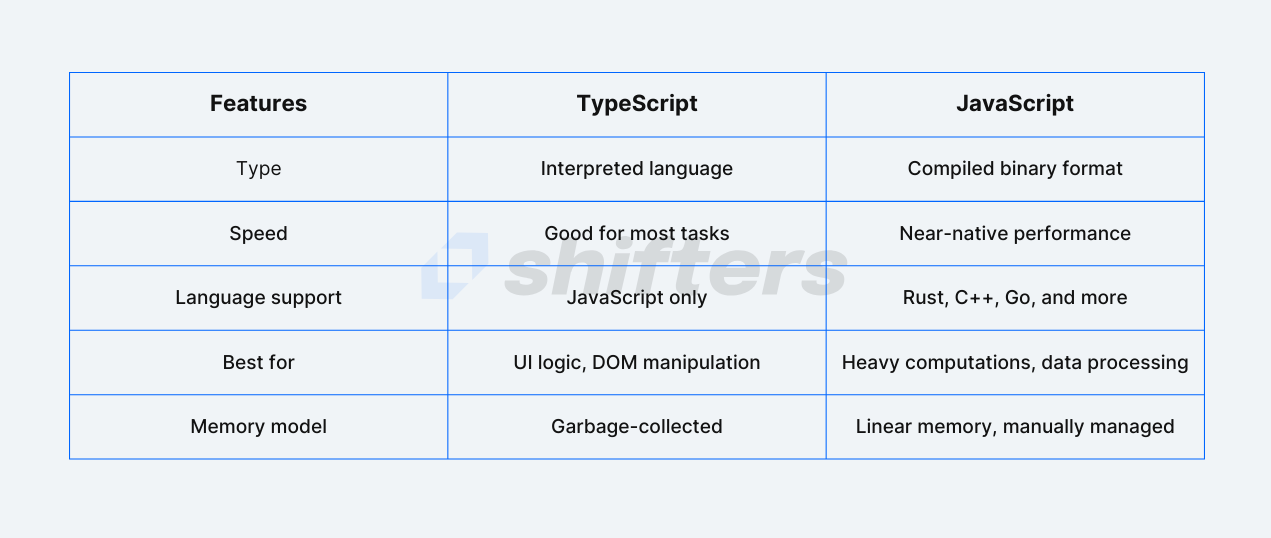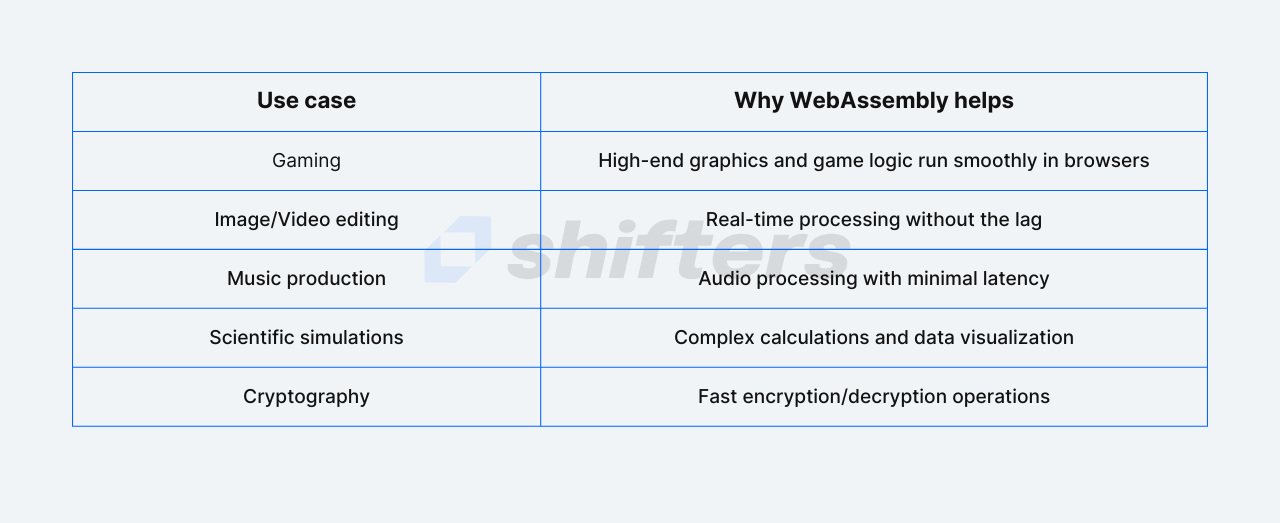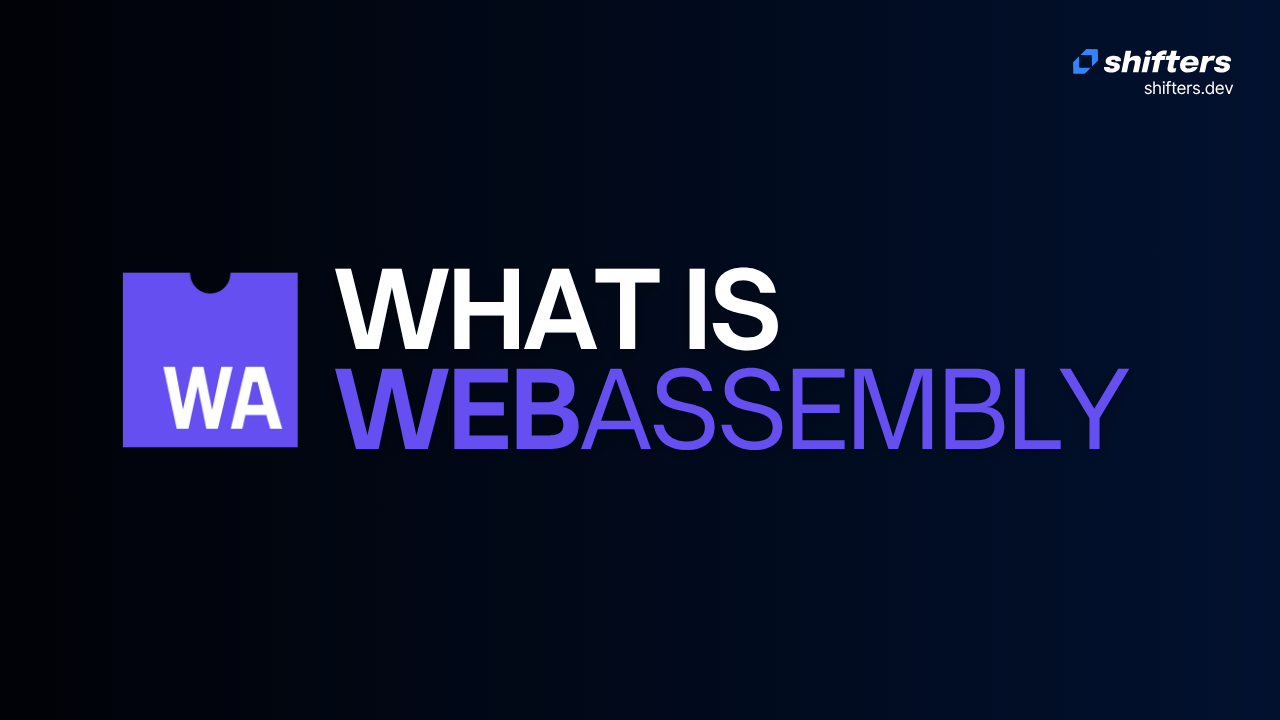If you've been coding for the web lately, you've probably heard whispers about something called WebAssembly. Maybe you've wondered what all the fuss is about, or whether it's just another tech buzzword that'll fade away. Well, I'm here to tell you - this one's actually pretty exciting.
After spending some time diving into WebAssembly (or WASM as the cool kids call it), I can honestly say it's changing how we think about web performance. Let me walk you through what I've learned, and why you might want to pay attention to this technology.
What is WebAssembly?
Think of WebAssembly as a way to run code that's almost as fast as native desktop applications, but right in your web browser. Pretty wild, right?
Here's the thing - for years, JavaScript was basically the only language you could run in browsers. Sure, it's great for many things, but when you need to do heavy computational work (think image processing, games, or complex math), JavaScript can feel a bit sluggish.
WebAssembly changes this game completely. It's an open standard that lets you take code written in languages like C++, Rust, or Go, compile it into a special binary format, and run it in the browser at near-native speeds. The World Wide Web Consortium (W3C) developed this standard specifically to boost web performance.
But here's what's really cool - WebAssembly isn't trying to replace JavaScript. Instead, it works alongside it, handling the heavy lifting while JavaScript takes care of the user interface and browser interactions.
Basic concepts
Before we get our hands dirty, let me explain a few key concepts that'll help everything make sense.
Modules
WebAssembly code is organized into modules. Think of these like JavaScript modules - they contain functions and can import and export stuff. The browser compiles these modules from binary format, making them ready to use.
Stack machine
WebAssembly works as a stack machine, which means it uses a system of instructions to control loops, math operations, and memory access. Don't worry if this sounds technical - you don't need to understand the inner workings to use it effectively.
Getting started
The easiest way to start experimenting is with WebAssembly Studio, an online editor that supports various languages. For beginners, I'd recommend starting with AssemblyScript since it looks similar to TypeScript.
Simple example
Let's create a simple multiplication function. In AssemblyScript, it looks like this:
export function multiply(a: i32, b: i32): i32 {
return a * b;
}
This function takes two 32-bit integers and returns their product. The export keyword makes it available to JavaScript.
Using in JavaScript
Now comes the fun part - using our WASM function in JavaScript. First, we need to load the WASM file:
// Load the WASM file
fetch('module.wasm')
.then(response => response.arrayBuffer())
.then(bytes => WebAssembly.instantiate(bytes))
.then(results => {
const multiply = results.instance.exports.multiply;
console.log(multiply(5, 10)); // Returns 50
});
You can also use the more modern instantiateStreaming method for better performance:
WebAssembly.instantiateStreaming(fetch('module.wasm'))
.then(results => {
const multiply = results.instance.exports.multiply;
console.log(multiply(5, 10));
});
Performance comparison
Here's where things get interesting. Let me show you a side-by-side comparison of the same multiplication operation:
// JavaScript version
function multiplyJS(a, b) {
return a * b;
}
// Performance test
console.time('JavaScript');
for(let i = 0; i < 1000000; i++) {
multiplyJS(123, 456);
}
console.timeEnd('JavaScript');
console.time('WebAssembly');
for(let i = 0; i < 1000000; i++) {
wasmMultiply(123, 456);
}
console.timeEnd('WebAssembly');
In my tests, WebAssembly consistently performed about 60% faster than pure JavaScript. Your results might vary, but the performance boost is usually significant.
Image processing example
Let's look at something more practical - image manipulation. I took the classic pixel inversion example and implemented it in both JavaScript and WebAssembly:
// JavaScript version
function invertColors(imageData) {
const data = imageData.data;
for(let i = 0; i < data.length; i += 4) {
data[i] = 255 - data[i]; // Red
data[i + 1] = 255 - data[i + 1]; // Green
data[i + 2] = 255 - data[i + 2]; // Blue
// Alpha channel stays the same
}
}The WebAssembly version of the same function showed a 50-60% performance improvement on average. For operations involving thousands of pixels, this difference is huge.
Communication between both
One thing that really impressed me is how WebAssembly and JavaScript can work together. It's not just about calling WASM functions from JavaScript - you can also access browser APIs from within WebAssembly.
For example, if you want to use console.log from your WASM code, you can pass it during instantiation:
const importObject = {
env: {
consoleLog: (arg) => console.log(arg)
}
};
WebAssembly.instantiateStreaming(fetch('module.wasm'), importObject)
.then(results => {
// Your WASM module can now call consoleLog
});
Then in your AssemblyScript code, you declare and use it:
declare function consoleLog(value: i32): void;
export function testFunction(): void {
consoleLog(42); // This will log 42 to the browser console
}
How WebAssembly works
WebAssembly operates in a secure sandbox environment, completely isolated from your system. This means it can't access your files, network connections, or other sensitive resources without explicit permission.
The key difference from JavaScript is that WebAssembly is compiled binary code, not interpreted script. Your browser's WASM engine executes this code in its own memory space, which contributes to both its security and performance benefits.
WebAssembly vs JavaScript
Here's a practical comparison to help you decide:

The sweet spot is using them together - JavaScript as the "brain" handling user interactions and DOM manipulation, while WebAssembly serves as the "muscle" for performance-critical operations.
Use cases
WebAssembly really shines in computation-heavy applications:

Companies like Figma, AutoCAD, and Photoshop are already using WebAssembly to deliver desktop-class experiences in the browser.
Limitations
WebAssembly isn't perfect yet, but the limitations are being actively addressed:
No direct DOM access: WASM still needs JavaScript to interact with web page elements. This is actually a security feature, but it can complicate some workflows.
Limited garbage collection: Languages like Python and Java aren't fully supported yet, though this is changing with new proposals.
Multithreading is experimental: Full threading support is still evolving, though basic features are available.
Tooling complexity: Setting up compilers like Emscripten or wasm-pack requires some learning, but tools are getting more user-friendly.
Beyond browsers
What's really exciting is that WebAssembly isn't staying confined to browsers. It's expanding to edge computing platforms and server-side applications. This means the skills you learn today will be relevant in many different contexts tomorrow.
My recommendations
If you're interested in exploring WebAssembly, here's how I'd suggest starting:
Try WebAssembly Studio for quick experiments
Start with AssemblyScript if you're comfortable with TypeScript
Learn Rust if you want to write more complex WASM applications
Experiment with existing tools like wasm-pack for Rust or Emscripten for C++
Conclusion
WebAssembly isn't trying to replace JavaScript - it's here to make the web faster and more capable. If you're working on performance-heavy applications like games, image processing, or complex calculations, WASM can give you the speed boost you've been looking for. The learning curve exists, but the results speak for themselves with 50-60% performance improvements in real-world scenarios.
The best part? We're just getting started. As WebAssembly continues to evolve beyond browsers into servers and edge computing, the skills you build today will open up even more possibilities tomorrow.



